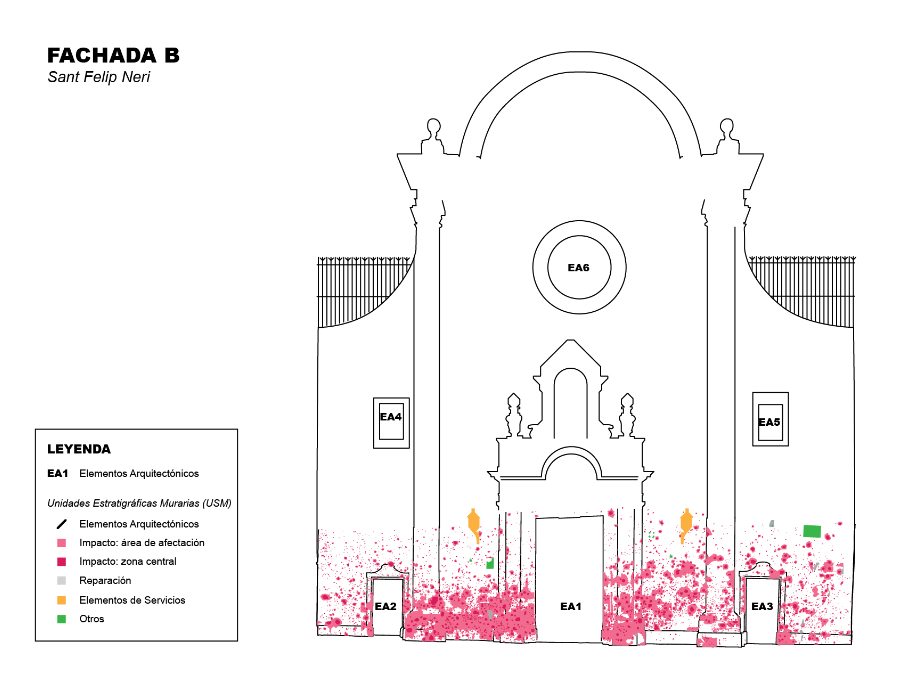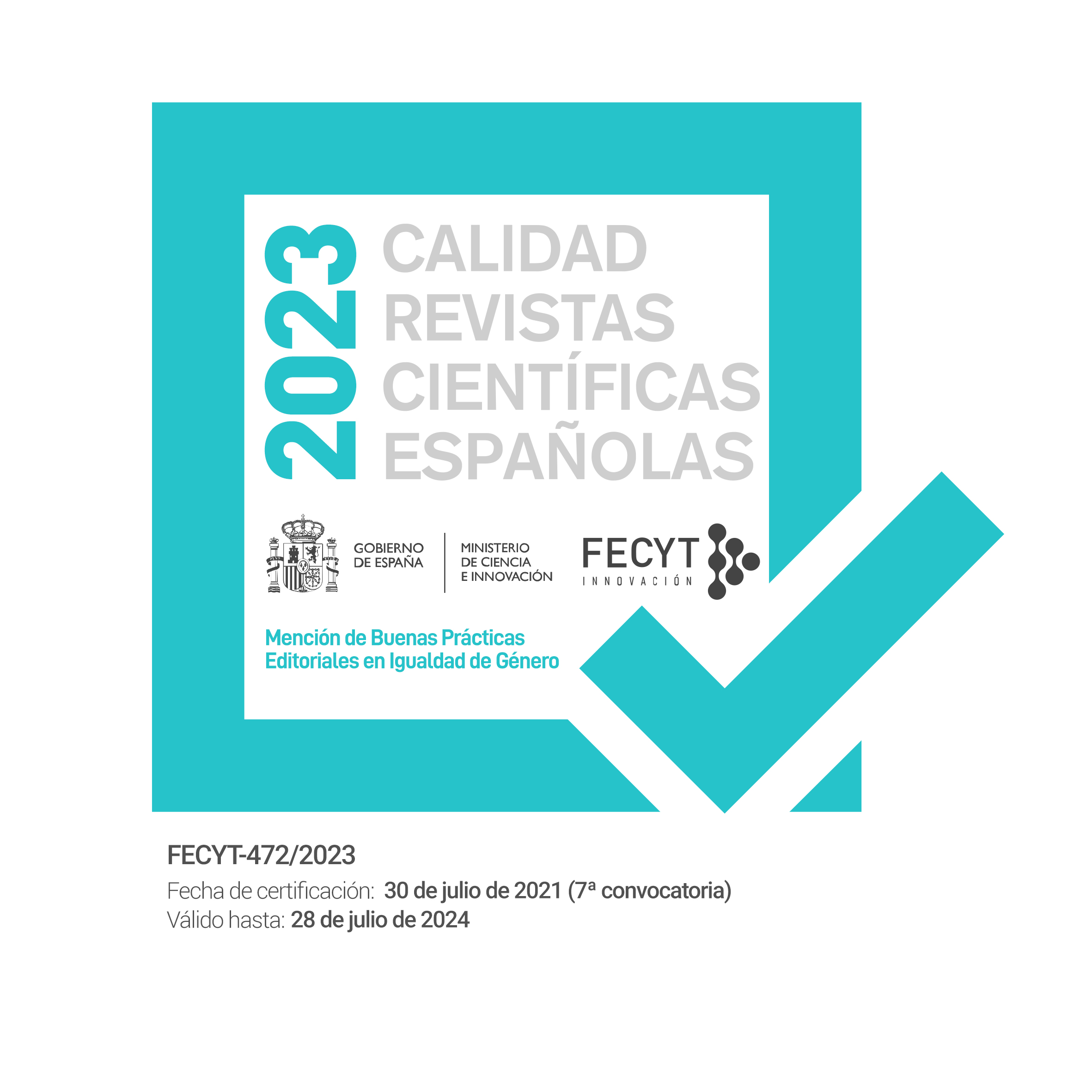Edificios heridos. Propuesta para una arqueología de los bombardeos de la Guerra Civil Española (1936-1939)
DOI :
https://doi.org/10.30827/e-rph.v0i23.17857Mots-clés :
Patrimonio del Conflicto, Bombardeos, Memoria, Guerra Civil EspañolaRésumé
En este artículo se presenta un nuevo enfoque patrimonial y arqueológico sobre los estudios de los bombardeos de la Guerra Civil Española contra la población civil, exponiendo una propuesta metodológica interdisciplinar que estudia las huellas de estos bombardeos, aún presentes y visibles en nuestras ciudades en el siglo XXI. Se expone la posibilidad de analizar nuevas fuentes documentales y su encaje con el trabajo arqueológico. El estudio documental y arqueológico sobre los restos de estos bombardeos permite analizar el alcance de la destrucción y la permanencia de la huella de esta particular violencia en los edifiios de la trama urbana de Barcelona. Estos restos se erigen como agentes relevantes para la memorialización de los bombardeos fascistas sobre Barcelona y problematizan a su vez la consideración de los límites del patrimonio del conflcto desde la materialidad de un pasado traumático poco abordado.
Téléchargements
Références
Anónimo. (1938). “El món té la prova de la bona voluntat de la Republica per evitar els bombardeigs de la rereguarda”. La Humanitat, febrero 4, 1.
Anónimo. (1958). “Crónica de la jornada. La plaza de San Felipe Neri”. La Vanguardia, diciembre 18, 23.
ALBERTÍ, S.; y ALBERTÍ CASAS, E. (2004). Perill de bombardeig! Barcelona sota les bombes: 1936-1939. Barcelona: Albertí Editors.
ALCOFAR NASSAES, J. L. (1975). La aviación legionaria en la guerra española. Barcelona: Euros.
ARACIL, R.; y VILLARROYA i FONT, J. (2010). El País Valencià sota les bombes (1936-1939). Valencia: Publicacions de la Universitat de València.
AYÁN VILA, X. M.; BLANCO ROTEA, R.; y MAÑANA BORRAZÁS, P. (2002).Arqueotectura 1: Bases teórico-metodológicas para una Arqueología de la Arquitectura. Santiago de Compostela: Tapa. Traballos de arqueoloxía e patrimonio 25.
AYÁN VILA, X. M.; BLANCO ROTEA, R.; y MAÑANA BORRAZÁS, P. (2003). “Archaeotecture: seeking a new archaological vision of Architecture”. En: Archaeotecture: Archaeology of Architecture, X. M. Ayàn Vila, R. Blanco Rotea, y P. Manana Borrazàs eds., Oxford: Archaeopress, pp. 1 -15.
AZKARATE, A. (2003). Arqueología de la arquitectura. Vitoria: Universidad del País Vasco.
BIASATTI, S.; y COMPAÑY, G. (2015). Memorias Sujetadas. Hacia una lectura crítica y situada de los procesos de memorialización. Madrid: JAS Arqueologia.
BROGIOLO, G. P.; y CAGNANA, A. (2012). Archeologia dell’architettura: metodi e interpretazioni. Borgo S. Lorenzo: Metodi e temi dell’archeologia medievale 3, All’Insegna del Giglio.
BROWNE, M.; KOETTL, C.; SINGHVI, A.; RENEAU, N.; MARCOLINI, B.; AL HLOU, Y.; y JORDAN, D. (2018) “One Building, One Bomb: How Assad Gassed His Own People”, The New York Times.
DESILVEY, C.; y EDENSOR, T. (2012). “Reckoning with ruins”. Progress in Human Geography 37 (4), pp. 465-485.
DOGLIONI, F.; y CIAROCCHI, M. (1997). Stratigrafia e restauro: tra conoscenza e conservazione dell’architettura. Trieste: Lint Editoriale Associati.
DOMÈNECH, X.; ZENOBI, L. (2007). Quan plovien bombes: els bombardeigs i la ciutat de Barcelona durant la Guerra civil. Barcelona : Museu d’Història de Catalunya.
EDGERTON, D. (2007). Innovación y tradición: historia de la tecnología moderna. Barcelona: Crítica.
FLORENSA i FERRER, A. (1958). La plaza de San Felipe Neri : ayer, hoy y mañana. Barcelona : Ayuntamiento de Barcelona.
GALLEGO VILA, L. (2017). “Els bombardeigs de Barcelona durant la Guerra Civil: historiografia i memorialització”. Índice Histórico Español, 130.
GANAU CASAS, J. (2003). La recreació del passat: el Barri Gòtic de Barcelona, 1880-1950. Barcelona: Barcelona quaderns d’història 8 (El procés urbà i la identitat gòtica de Barcelona).
GESALÍ BARRERA, D.; ÍÑIGUEZ GRÀCIA, D. (2012). La guerra aèria a Catalunya (1936-1939). Barcelona: Rafael Dalmau.
GLOVER, J. (2001). Humanity: A Moral History of the Twentieth Century. Yale: Yale Nota Bene.
GONZÁLEZ CANTERA, T. (2017). Bilbao bajo las bombas: Análisis espacial de los refugios antiaéreos de la ciudad en época republicana (1936-1937). Trabajo de Final de Grado. Universitat de Barcelona .
GONZÁLEZ-RUIBAL, A. (2008a). “Arqueología de la Guerra Civil Española”. Complutum, 19 (2), pp. 11 -20.
GONZÁLEZ-RUIBAL, A. (2008b). “Time to Destroy. An archaeology of supermodernity”. Current Anthropology, 49 (2), pp. 247-79.
GONZÁLEZ-RUIBAL, A. (2013). “Reclaiming archaeology” en Reclaiming Archaeology: Beyond the Tropes of Modernity. Pp. 1 -23.
IRUJO, X. (2017). Gernika. Barcelona: Crítica.
JOUANNAIS, J. (2017). El uso de las ruinas. Barcelona: El Acantilado.
KLUGE, A. (2014). Ataque aéreo a Halberstadt, el 8 de abril de 1945. Madrid: Antonio Machado Libros.
LOGAN, W.; REEVES, K. (2008). Places of pain and shame. Dealing with difficult heritage. Londres: Routledge.
MASSOT, J. (1996). Mallorca durant la Guerra Civil: 1936-1939. Palma de Mallorca: Documenta Balear.
MIRÓ, C.; RAMOS, J. (201 1). “Els refugis antiaeris de Barcelona (1936-1937). Una nova visió des de l’arqueologia d’intervenció” Exnovo, pp. 55-79.
MIRÓ, C.; RAMOS, J. (2013). Cronotipologia dels refugis antiaeris de Barcelona. Barcelona.
MUHBA documents NÚM. 6.
MISA, T. J. (2004). Leonardo to the Internet. Technology and Culture from the Renaissance to the present. Baltimore: The Johns Hopkins University Press.
MOSHENSKA, G. (2009). “Resonant Materiality and Violent Remembering: Archaeology, Memory and Bombing”. International Journal of Heritage Studies, 15(1), pp. 44–56.
MOSHENSKA, G. (2010). “Working with Memory in the Archaeology of Modern Conflict”. Cambridge Archaeological Journal, 20 (1), pp. 33 -48.
MOSHENSKA, G. (2012). “Unbuilt heritage: conceptualising absence in the historical environament”. En: S. May, H. Orange, y S. Penrose. Oxford: Archaeopress, eds., The Good, the Bad and the Unbuilt: Handling the Heritage of the 21st Century,.
MOSHENSKA, G. (2014). “Children in ruins: bombsites as playgrounds in Second World War Britain”. En: B. Olsen y Þ. Pétursdóttir, eds., Ruin Memories: Materiality, Aesthetics and the Archaeology of the Recent Past. Abingdon: Routledge, pp. 230-49.
PEINADO CUCARELLA, J. (2015). La defensa de la ciudad de Valencia 1936-1939. Una aproximación arqueológica de la Guerra Civil española. Universitat de València.
RIEGL, A. (1903). El culto moderno a los monumentos. Madrid: Antonio Machado.
ROJO ARIZA, M.C. (2013). “¿Arqueología y aviación?: la excavación de aerodrómos de campaña en el Penedés”. Revista Universitaria de Historia Militar, 2, pp. 85-108.
ROJO ARIZA, M.C.; y COMA QUINTANA, L. (2010). “Arqueología y museografía didáctica en los aeródromos de guerra (1936-1939)”. Ebre 38, 4, pp. 165-77.
ROMANÍ, D. (2002). “Las paredes hablan. Heridas de guerra. Plaza Sant Felip Neri”. La Vanguardia, junio 26, 5.
RUIZ DEL ÁLAMO, M.; BELISARIO, D. (2017). “Big Data y 3D para denunciar crímenes de guerra”. El País, mayo 23.
SEBALD, W. G. (2003). Sobre la historia natural de la destrucción. Barcelona: Anagrama.
SOLÉ, Q; y JANÉ, O. coords. (2017). L’arqueologia del món modern i contemporani. Afers, 78.
SOLÉ i SABATÉ, J. M.; VILLARROYA i FONT, J. (1986). Catalunya sota les bombes : 1936-1939. Barcelona: Abadia de Montserrat.
SOLÉ i SABATÉ, J. M.; VILLARROYA i FONT, J. (2003). España en llamas : la guerra civil desde el aire. Madrid: Temas de Hoy.
STONE, M. (2004). “A memory in ruins?”, Public Archaeology, 3, pp. 131 -44.
TANAKA, Y.; y YOUNG, M. B. eds. (2009). Bombing Civilians: a twentieth-century history. New York: New Press.
DE VEGA, E.; y MARTÍ N MORALES, C. (2010). Arqueología aplicada al estudio e interpretación de edificios históricos: últimas tendencias metodológicas. Madrid: Ministerio de Cultura, Subdirecció n General de Publicaciones, Información y Documentación.
VILLARROYA i FONT, J. (1981). Els Bombardeigs de Barcelona durant la Guerra Civil. Barcelona: Abadia de Montserrat.
VILLARROYA i FONT, J. (1999). Els Bombardeigs de Barcelona durant la Guerra Civil : 1936-1939. Barcelona: Publicacions de l’Abadia de Montserrat.
VOLTES, P. (1 963). “Otro éxito de la revalorización del barrio gótico. Barcelona ha recobrado en la plaza de San Felipe Neri, uno de sus rincones más atractivos”. La Vanguardia, julio 23, 21.
WEIZMAN, E. (2017). Forensic architecture: violence at the threshold of detectability. New York: Zone Books.

Téléchargements
Publié-e
Comment citer
Numéro
Rubrique
Licence
Las/os autoras/es conservan los derechos de autoría y otorgan a la revista el derecho de primera publicación (reproducción, edición, distribución, comunicación pública y exhibición).
Más infomación en Sobre la revista > Aviso de derechos de autor/a














